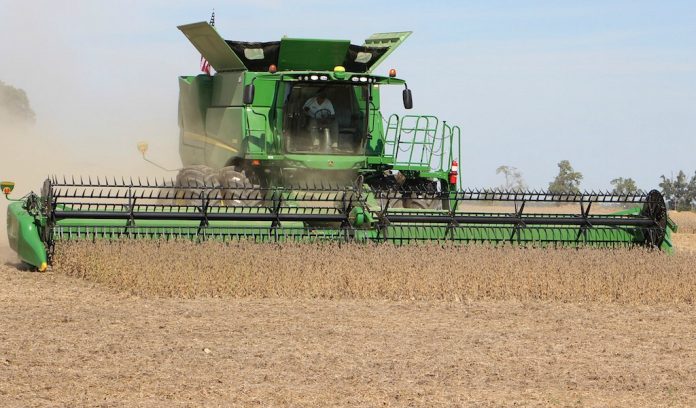The biggest market maker this week will not be weather. For the first time in several weeks, every little nuance of rain or drought or temperature will not move the market as much as one big fundamental piece of news — Thursday, at noon our time, USDA will release the August 1 Crop Production Report and the Supply and Demand Report.
For now, weather still matters. Monday the markets were higher, and there is follow-through this Tuesday morning (Aug. 8) as this is written. Areas of the west are dry, and recent rains have missed them, even though forecast. Iowa and southern Illinois are in drought, and they are always significant to anticipated production because they represent a large part of the national crop.
Crop condition
The drought was reflected in official numbers Monday. Illinois dropped a whole 5 percent in the good and excellent categories in USDA’s Crop Condition Report, out late Monday afternoon. That has them at 58 percent this week. Ohio’s corn rating stayed the same this week, at 57 percent. The U.S., aided by the drop in Illinois, fell 1 percent to 60 percent. Last year, we were at 74 percent.
U.S. soybeans actually improved 1 percent in the good and excellent categories, to 60. Of course, they were 72 last year.
The Ohio crop dropped from 48 percent last week to 47 this week. This is contrary to my opinion of the local crop, which I think has gained noticeably in the last week. We have grown up, greened out, and I bet we are going to see more beans than it seemed like a few weeks ago. August is always the key to bean production.
Huge swing
Looking at prices, we see a huge cycle swing with a couple of smaller cycles in between for both corn and soybeans. December corn futures are currently trading 3.86 1/4 on this Tuesday morning, down a half-cent for the day. On the strength of the dry west a month ago we soared to 4.17/1/4 on July 11. After two mild cycles, we were back to 3.75 Aug. 3, confirming the low. Being 11 cents higher now is encouraging, but not exciting. We are so far from the top.
The November beans show a similar, if larger, pattern. We traded the low of 9.07 on June 23. By July 11, we had a high of 10.47, and you could see farmer smiles everywhere. After a couple of small cycles, though, we returned to 9.55 1/2 on Aug. 3.
It is encouraging that we did not return to the low, as in corn. We have turned higher and are staying toward the middle of the recent range, with a potential weather market for beans ahead.
As I said last week, the real weather opportunity for corn died with a good pollination. The current Illinois and Iowa situation can change prices, but not as dramatically as was possible if we had gone through pollination dry.
The USDA report
Ahead of us, however, is the USDA reports, out the day most of you will read this — Thursday. This is a critical read on the situation, devoid of the emotional swings the traders have been giving every major weather event.
What does USDA think we will see for crop production? If it is lower than the market had been trading, we can see a rally out of the report. If we see large production numbers, the party is running out of steam, and someone needs to crack another keg.
Wheat
The wheat market has also run out of steam. We rallied sharply on the dry weather that was hurting the planting and growing of the spring wheat crop. The high was 5.79 1/2 on July 5. Since then, we have been mostly lower, and put in a low on Aug. 4 at 4.53 1/2 — back where we were in June.













